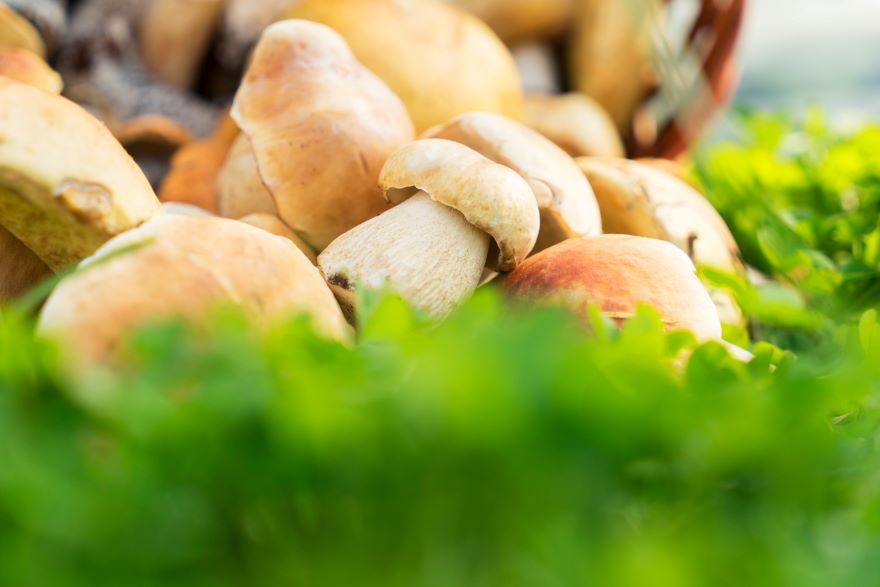Hydroponic mushrooms are an innovative way to grow mushrooms without soil, using nutrient-rich water or alternative growing media. This method allows for better control over the growing conditions, resulting in healthier, higher-quality mushrooms. Discover how to cultivate mushrooms without soil using innovative hydroponic techniques. Elevate your mushroom growing knowledge today! By understanding and mastering hydroponic mushroom cultivation, it’s possible to produce these delicious fungi in a sustainable, efficient manner.

Setting up a hydroponic mushroom system can be a rewarding and fulfilling experience. The process typically involves establishing an environment that encourages mycelium growth and maintaining optimal conditions for mushroom development. Although it may seem complex at first, carefully following the steps and techniques for hydroponic cultivation can lead to a successful and thriving mushroom garden.
Key Takeaways
- Hydroponic mushrooms provide an efficient, soil-free approach to growing healthy and high-quality fungi.
- Establishing optimal conditions for mycelium growth is crucial for a successful hydroponic mushroom system.
- You can achieve cultivating a variety of mushrooms, such as oyster and shiitake, through hydroponic methods.
Understanding Hydroponic Mushroom Cultivation
Basics of Mycelium and Spores
In my experience with hydroponic mushroom cultivation, I’ve learned that to grow hydroponic mushrooms effectively, it’s essential to understand the basics of mycelium and spores. Mycelium is the vegetative part of fungi, consisting of a network of fine, thread-like structures called hyphae. On the other hand, mushrooms’ reproductive cells, spores, germinate and grow into mycelium when suitable conditions are met.
In a hydroponic system, growers grow the mycelium on a substrate that provides the necessary nutrients for growth. Common substrates include vermiculite, brown rice flour, and even specially designed hydroponic solutions. It’s crucial to maintain a proper environment for the mycelium, as it helps in the propagation of spores and, ultimately, the formation of mushrooms.
Hydroponic Systems for Mushrooms
As I experimented with various hydroponic systems for mushrooms, I discovered that there are a few popular techniques for growing mushrooms without soil. Some examples of these are:
- Drip System: This method involves moistening the substrate with nutrient-rich water to promote mycelium growth. Growers then drain and recycle the water to minimize waste while maintaining ideal humidity.
- Aeroponics: In this advanced method, growers suspend mushrooms in a chamber and spray nutrient-rich mist directly onto their roots, maximizing oxygen exposure and nutrient absorption. This method can lead to rapid growth and high yields.
Opting for the right hydroponic system depends on the specific type of mushroom you’d like to cultivate and your personal preferences, resources, and requirements. Some mushrooms, such as oyster and shiitake, thrive better in hydroponic systems than others.
In conclusion, understanding the fundamentals of mycelium and spores, along with the appropriate hydroponic system, is key to success in hydroponic mushroom cultivation. By maintaining a suitable environment and providing the necessary nutrients, you can grow healthy and bountiful mushrooms even without soil.
Setting Up Your Hydroponic Mushroom System
Choosing the Right Substrate and Nutrients
When I set up my hydroponic mushroom system, the first thing I consider is choosing the right growing medium and nutrients. This is essential to ensure the mycelium has the proper environment to grow and flourish. An effective substrate for hydroponic mushrooms can be a mix of materials such as sawdust or vermiculite combined with nutrient-rich grain. If you’re a beginner, it’s helpful to start with a mushroom kit that will provide you with the right substrate and nutrients needed for successful growth.
Climate Control: Temperature and Humidity
Another vital aspect in setting up my hydroponic mushroom system is maintaining the optimal temperature and humidity. Different temperatures and humidity levels are required for the mycelium to grow and thrive, depending on the mushroom variety. As a rule of thumb, I find that maintaining a temperature range of 65-75°F and humidity levels around 85-95% is suitable for most mushroom varieties.
To achieve the necessary climate, I use a reliable thermostat alongside a humidifier to ensure the environment is consistent. Regularly monitoring the temperature and humidity, and making necessary adjustments, helps create the perfect conditions for my mushrooms.
Light Requirements and Equipment
Lastly, I give attention to the lighting requirements when setting up my hydroponic mushroom system. Contrary to popular belief, mushrooms do require some light to guide their growth. However, the intensity and duration of light needed varies greatly based on the mushroom variety.
For my setup, I use low-intensity LED lights, which provide enough illumination for my mushrooms without generating excess heat that can affect the environment. I usually set the timer to provide at least 12 hours of light daily, though it might differ across various species.
Overall, setting up a hydroponic mushroom system is a rewarding process that requires attention to detail and the right equipment. By considering these three factors: substrate and nutrients, climate control, and lighting, I am well on the way to successfully cultivating my own hydroponic mushrooms.
The Growth Process of Hydroponic Mushrooms
From Spores to Harvesting
To understand hydroponic mushroom growth, it’s important to know the basic life cycle of mushrooms. My goal is to inform you about the process from spore germination to harvesting and everything in between.
First, let’s talk about the spawn. Spawn is the medium in which mushroom spores germinate to form mycelium, a living network of thread-like cells. I typically use a sterilized grain as my spawn medium for hydroponic mushrooms, which allows the mycelium to grow on a solid substrate efficiently.
Here are some steps outlining the growth process:
- Germination: The spores germinate in the spawn, developing into the early stages of mycelium.
- Mycelial Growth: The mycelium digests the grain and grows throughout the substrate, forming a single, connected network.
- Fruiting: When the environmental conditions are suitable, the mycelium begins to develop mushroom bodies, called primordia or pins.
- Harvesting: Once the mushrooms reach the desired size, I carefully pick them from the substrate, ensuring minimal damage to the mycelium.
When growing hydroponic mushrooms, I pay close attention to the environmental factors that affect the different stages of the life cycle. For instance, optimal conditions will vary depending on the species being cultivated as temperature, humidity, and light play crucial roles during fruiting.
It’s worth noting that hydroponic mushroom growing can be a streamlined, efficient way to grow mushrooms without soil. In a hydroponic system, growers use a nutrient-rich solution to support the growth of mushrooms, making the entire process more sustainable and effective than conventional methods.
In summary, the growth process of hydroponic mushrooms involves four stages: germination, mycelial growth, fruiting, and harvesting. By understanding the key steps in mushroom development and providing suitable conditions, I can ensure a successful hydroponic mushroom crop.
Common Types of Hydroponic Mushrooms

Oyster Mushrooms and Their Variants
In my experience, one of the most popular hydroponic mushroom varieties is the oyster mushroom. They come in several types, such as blue oyster, pink oyster, and yellow oyster. I find it fascinating that these varying colors not only make them visually appealing but also impact their taste and texture. Compared to other mushrooms, growers find it relatively easy to grow oyster mushrooms hydroponically, and they recognize the essential role of nutrient-rich solutions for successful growth.
Shiitake Mushrooms Cultivation
Another favorite variety of hydroponic mushroom I’ve encountered is the shiitake mushroom. Chefs highly value shiitake mushrooms for their rich and earthy flavor, and they often use them in various culinary dishes. The hydroponic cultivation of shiitake mushrooms may seem slightly challenging; however, the end results are very rewarding. Shiitakes typically require a specific system for growth that includes optimal lighting and nutrient distribution.
Exploring Other Edible Varieties
IIn addition to oyster and shiitake mushrooms, growers can cultivate a wide range of edible mushroom varieties hydroponically. Some of these include:
- Button mushrooms: These are the most common mushrooms found in grocery stores and can be grown hydroponically with relative ease.
- Cinnamon cap: Known for their attractive appearance and peppery flavor, the cinnamon cap mushrooms are a delightful hydroponic mushroom variety.
- Maitake: Also known as “hen of the woods,” maitake mushrooms are sought after for their earthy taste, medicinal properties, and potential health benefits. They can also be hydroponically cultivated, but require precise control over nutrients and environmental conditions.
In my journey with hydroponic mushrooms, I have enjoyed exploring these different edible varieties. Each one offers a unique set of flavors, textures, and growth requirements. By maintaining proper conditions and providing the right nutrients, growing hydroponic mushrooms can be a rewarding experience for both novice and expert growers.
The Benefits and Challenges of Hydroponic Mushroom Farming
Advantages Over Traditional Cultivation
In my experience, hydroponic mushroom farming offers several benefits compared to traditional cultivation methods. Firstly, hydroponics is a more sustainable option, as it significantly reduces the water usage and space required for growing.
Hydroponic systems allow for a higher yield by providing greater control over the growing environment. Since I am not growing the mushrooms in soil, I can select the optimal growing media for the specific species of fungus being cultivated. This also minimizes the risk of contamination and allows the crop to thrive in a controlled and sterile environment.
| Factors | Hydroponic Mushroom Farming | Traditional Cultivation |
|---|---|---|
| Water Usage | Reduced | High |
| Space | Efficient | Tend to be larger |
| Contamination Risks | Lower | Higher |
| Environmental Control | Complete | Limited |
Addressing Potential Problems
Like with any farming method, hydroponic mushroom cultivation also has its obstacles. Sometimes it can be challenging to achieve the perfect balance of nutrients for the mushrooms to grow well, so I make sure to do some research regarding the specific nutrient solutions required for the species I am working with.
Maintaining a consistent and optimal environment for the growth of fungi can sometimes be difficult. I recommend investing in equipment to measure and control parameters like temperature, humidity, and pH so that you can adjust the environment accordingly.
However, as a hydroponic mushroom cultivator, I remain aware that there could be potential hardware issues, such as inadequate lighting or power failures, which may negatively impact the crop. In order to mitigate these risks, I regularly maintain the equipment and have backup options in place.
In conclusion, hydroponic mushroom farming offers many benefits over traditional cultivation, but it also has its challenges. With careful planning, diligence, and a little bit of adaptability, I found that it’s possible to grow mushrooms successfully in a hydroponic system.
Frequently Asked Questions

What are the optimal conditions for hydroponic mushroom cultivation?
To ensure success in hydroponic mushroom cultivation, I focus on providing the right environment. This includes maintaining suitable humidity levels, temperature, and light conditions. As each mushroom species has distinct requirements, I always recommend researching the specific needs of the mushrooms you’re growing. The Hydroponics Planet guide provides valuable information about optimal growing conditions for various mushrooms.
How does vertical farming apply to hydroponic mushroom production?
Vertical farming, a technique of growing crops in layers, can be successfully applied to hydroponic mushroom production. By taking advantage of vertical space, I can increase the overall yield and efficiency of my growing area. Many commercial mushroom growers utilize vertical farming methods, yielding higher crop density and reducing the need for vast horizontal spaces.
What are the advantages of hydroponic mushroom farming over traditional methods?
There are several benefits to hydroponic mushroom farming. Firstly, I find it to be more sustainable, as it conserves resources by using a nutrient-rich solution instead of soil. This method also reduces the risk of soil-borne diseases and pests affecting my mushrooms. Additionally, hydroponic systems offer greater environmental control, allowing me to optimize growing conditions for healthier, larger harvests. The Mushroom Hydroponics – 5 Questions Answered article provides further insight into the benefits of this technique.
Can mushroom cultivation be automated in a hydroponic system?
Yes, mushroom cultivation can be automated in a hydroponic system. I have seen automated systems employ a combination of monitoring and control devices to regulate growing conditions, such as humidity, temperature, and nutrient delivery. When using an automated system, I always suggest monitoring the system regularly to ensure it’s functioning properly and responding to any issues that may arise.
What types of hydroponic systems are best suited for growing mushrooms at home?
For growing mushrooms at home, I prefer to use a simple hydroponic system setup. One effective option is the “ebb and flow” system, which periodically floods the growing surface with nutrient solution and then drains it back, providing adequate moisture and nutrients for the mushrooms. You can also consider using a hydroponic mushroom kit, as Hydrobuilder’s article suggests, for an easier start to your home-based mushroom cultivation.
Which hydroponic nutrients are required for the successful growth of mushrooms?
The nutritional requirements of mushrooms differ from those of typical plants grown hydroponically. When growing mushrooms, I focus on the essentials such as nitrogen, phosphorous, and potassium, as well as certain trace minerals like magnesium and calcium. To help fulfill these needs, I use specially-designed hydroponic nutrient solutions for mushrooms available at gardening supply stores or online. It’s important to follow the recommended dosage and application instructions to avoid nutrient imbalances or deficiencies.

*We may earn a commission for purchases made using our links. Please see our disclosure to learn more.



